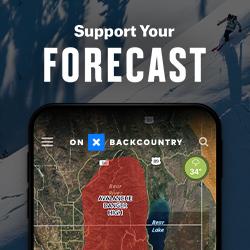The persistent weak layer (PWL) remains the primary concern. While the slab and overall snowpack are seemingly gaining strength, the weak, faceted grains at the ground remain evident. When avalanches are triggered on this layer, they are now deep and highly destructive, often with a 1 Finger slab sitting over them in many areas. Although the likelihood of triggering an avalanche on this layer is decreasing, the consequences remain high.
Today, we dug one full snow profile in a zone where I had easily collapsed the slope just a week ago. This time, we were unable to produce any results in our pit. However, we used a smart probe to assess multiple other locations across the region. All of these sites contained weak faceted snow at varying depths.
Below 8,000 feet, we consistently found the “Christmas” rime/rain crust, which was stout and supportable. The snowpack on the southern side of Pole Line Pass contained less snow across all aspects.
Looking ahead, the most concerning areas for this PWL would be where the slab is thinner. This could include specific terrain features, certain elevation bands, or entire slopes.
Our initial probe location, near the run Blast Off. NE - 9130'
Our second probe location, dropping over Pole Line Pass into American Fork. NW Aspect 7670'. Both the probe profiles and then physically digging showed the Christmas Rime Layer
The upper section of the snowpit to match the probe profile. 7670' NW. The obvious grey line is the Christmas Rime/Rain Layer.
Final full pit location off Pole Line Pass - 8950' - NE
Soft snow sitting atop a 1F slab - all on top of only 15-20 cm of facets. NE 8950'
Pole Line Pass stability test results - ECTX - 8950' NE



